Table of Contents
Product-Specific Rules (PSR)
Even if the materials from third countries (non-originating materials) are used in the production, goods
are considered as originating when the goods satisfy the requirement set out in the product-specific rules (PSR).
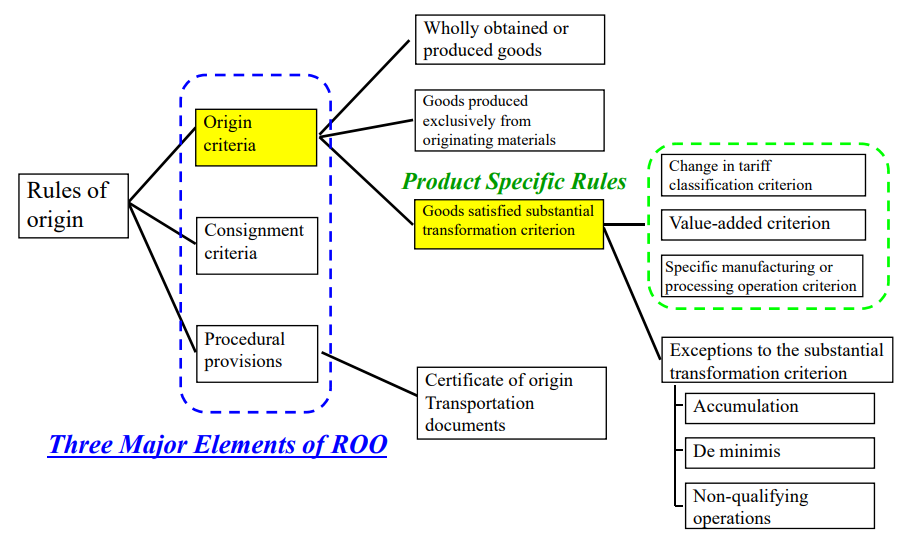
product-specific rules(PSR) is generally provided as an annex to each EPA.
In most of the EPAs, PSR is stipulated in the form of either:
“change in tariff classification”,
“qualifying/regional value content”,
“specific manufacturing or processing”, or a combination of these.
Here is an example of PSR stipulated in the Annex to EPA.
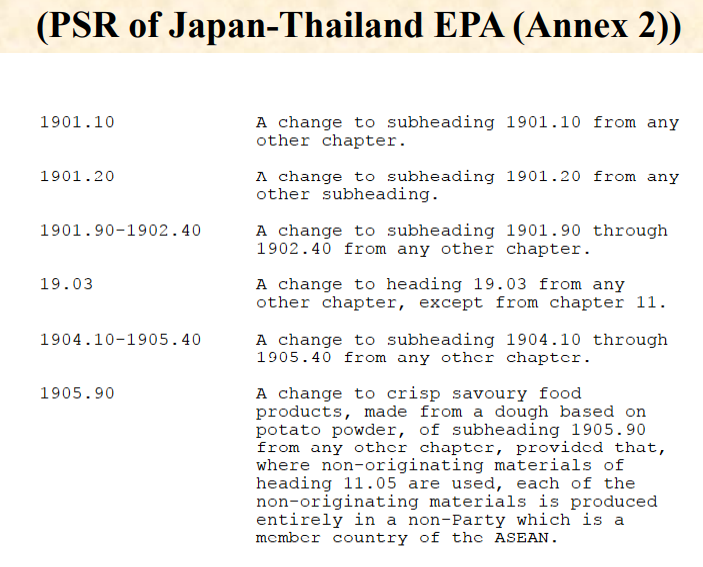
If the materials from third countries (non-originating materials) are used in the production,
Usually, we need to check PSR stipulated in the Annex to EPA.
How to read Product-Specific Rules(PSR)
e.g. under Japan-Thailand EPA
In this situation, we need to check if a toasted bread can be qualified as an originating
good of Thailand Under Japan-Thailand EPA.
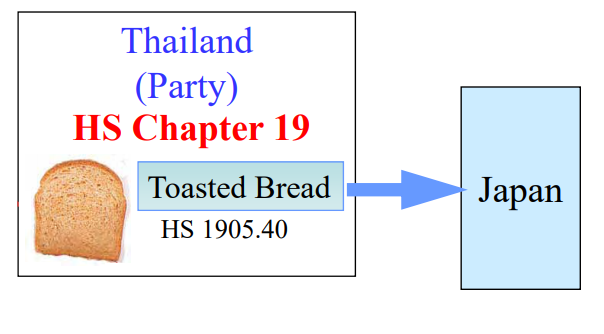
Retrieved from: Outline of Rules of Origin for EPA in Japan
It looks like the toasted bread is Thailand origin, but found out that the materials
from third countries (non-originating materials) are used in the production.
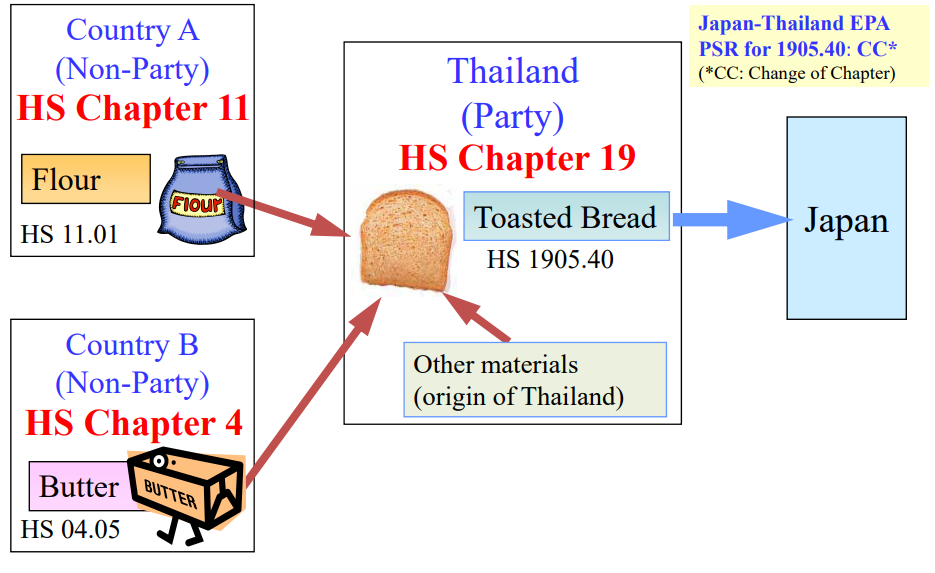
Retrieved from: Outline of Rules of Origin for EPA in Japan
The Flour and Butter are non-originating since they are imported from Non-Parties to Japan-Thailand EPA
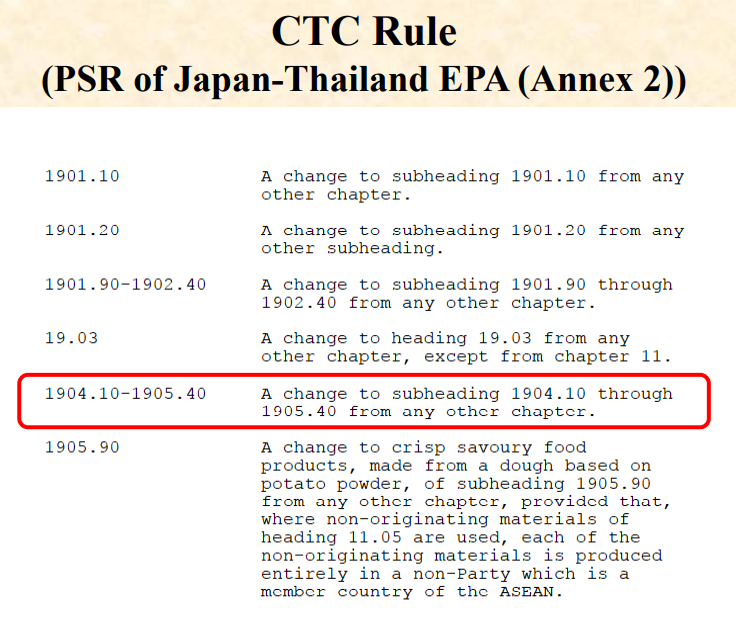
The Toasted Bread is classified under 1905.40 while the Flour is classified
under chapters 11 and The Butter is classified under chapters 04 respectively.
The Toasted Bread is an originating good under Japan-Thailand EPA because
a change from chapters 11 and 04 to chapter 19 has occurred.
e.g. Japan-Vietnam EPA
Example of under Japan-Thailand EPA The Toasted Bread is considered as an originating good.
Here is another example of Japan-Vietnam EPA.
Even the same production, The Toasted Bread is not considered as an originating good under Japan-Vietnam EPA,
because “PSR of Japan-Vietnam EPA” is different from “PSR of Japan-Thailand EPA”.
Here is PSR of Japan-Vietnam EPA (Annex 2)
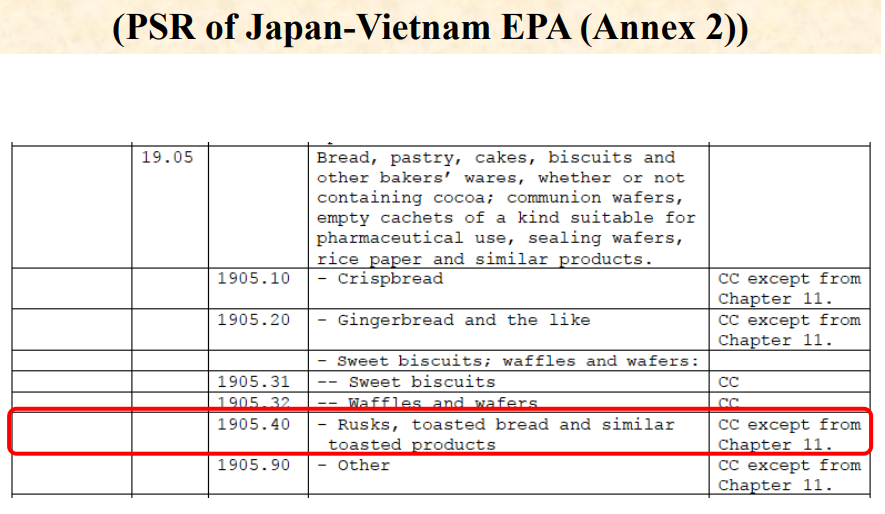
PSR for toasted bread is “CC except from Chapter 11” of CTC rule (require Chapter in Change).
In this production Flour (HS Chapter 11) is used as a non-originating material.
It does not satisfy the PSR.
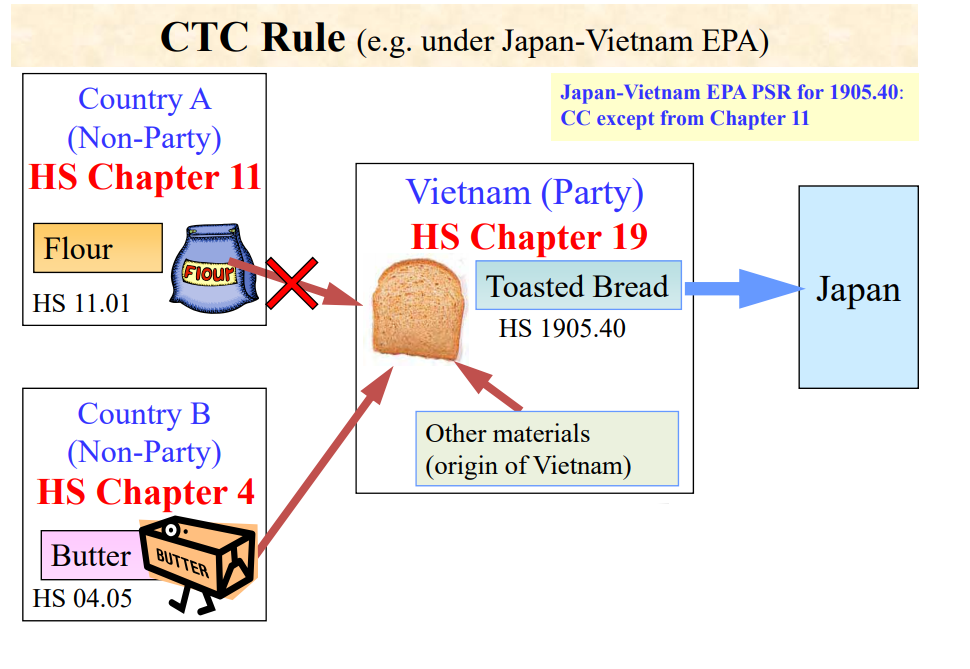
Without applicable exceptions to the substantial transformation criterion
toasted bread can not be qualified as an originating good of Vietnam.
e.g. under Japan-Singapore EPA
Good: Strawberries Jam (HS 2007.99)

PSR: A Change to heading 20.07 from any other Chapter (CC).
The strawberries jam is classified under chapter 20 while the strawberries
fruit and sugar are classified under chapters 08 and 17 respectively. The strawberries fruit
and sugar are non-originating since they are imported from Korea and Australia
respectively (Non-Parties to JSEPA). The strawberries jam is an originating good under
JSEPA because a change from chapters 08 and 17 to chapter 20 has occurred.
e.g. under Korea-Singapore EPA
Good: Crocodile Leather Handbag (HS 4202.21)

PSR:A Change to heading 42.01 through 42.03 from any other Heading (CTH).
The crocodile leather (HS Heading 41.15) is a non-originating material as it
is imported from Indonesia, a non-Party to KSFTA. The leather handbag is an originating
good under KSFTA because a change from HS Heading 41.15 to HS Heading 42.02 has
occurred.
e.g. under Japan-Thailand EPA
Good: soya sauce (HS 21.03)

PSR: Change of heading (change in the first 4 digits of the HS)(CTH)
The Soya beans (HS Heading 12.01) is a non-originating material as it
is imported from USA, a non-Party to Japan-Thailand EPA. The Soya sauce is an originating
good under Japan-Thailand EPA because a change from HS Heading 12.01 to
HS Heading 21.03 has occurred.
Here is the difference between
“Goods satisfy the requirement set out in the product-specific rules”
and
“Goods produced exclusively from originating materials”
“Goods satisfy the requirement set out in the product-specific rules”

For more detail see:What is “Goods produced exclusively from originating materials
“Goods produced exclusively from originating materials”

